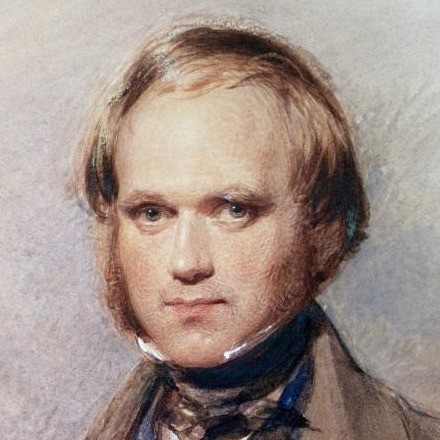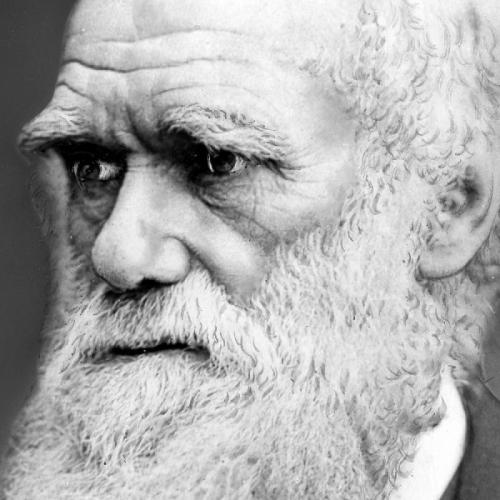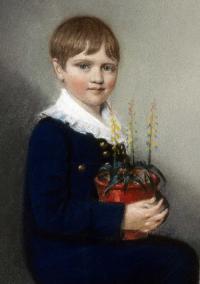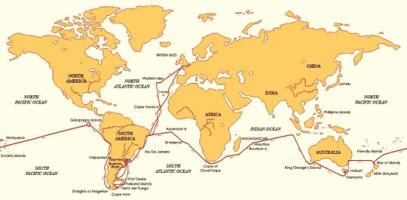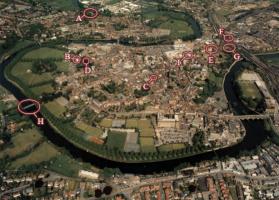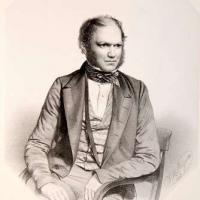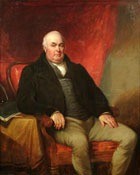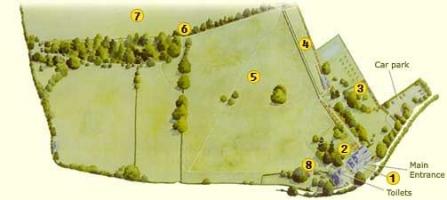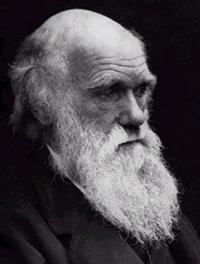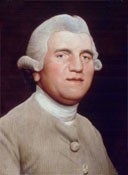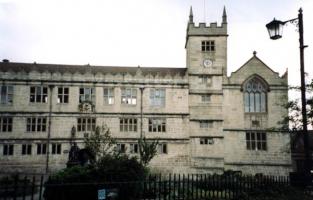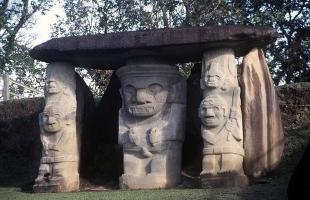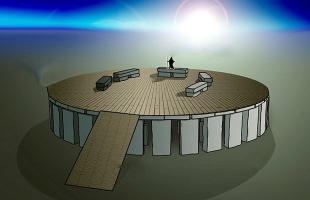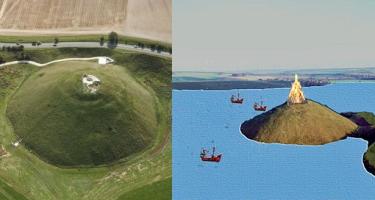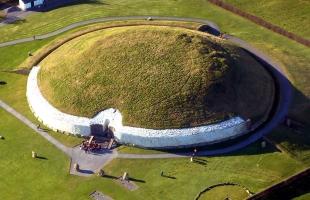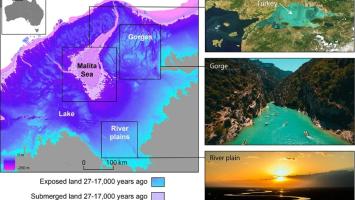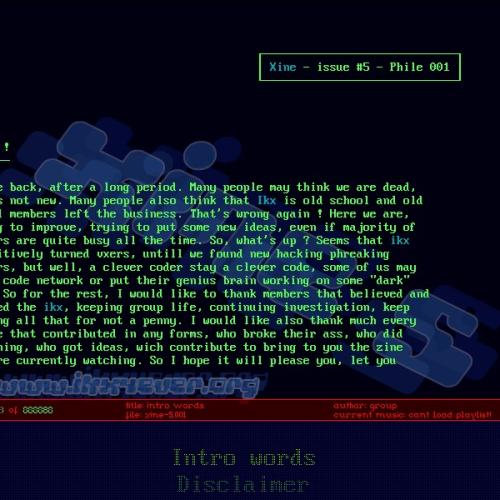Charles Darwin Edinburgh & Cambridge - College Years
Edinburgh University
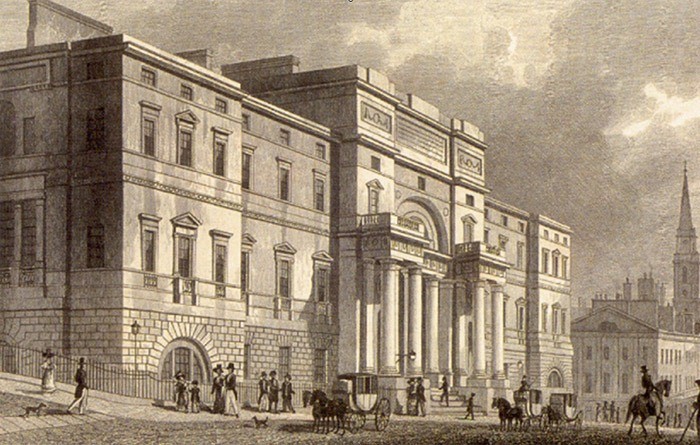
At the tender age of sixteen, Charles was enrolled at Edinburgh University by his father to study medicine and follow in the footsteps of both his grandfather Erasmus Darwin and his father Robert as a physician. To prepare Charles for Edinburgh, Dr. Robert Darwin had spent considerable time with Charles the previous summer, taking him on visits to his patients at the hospital and teaching him the skills he used as a physician. Charles was enthusiastic about what he was learning and Dr. Darwin concluded that Charles would make a very fine physician. At that time, Edinburgh had gained an equal footing with Leiden in Holland (the medical school where Robert received most of his training) and Padua in Italy as an eminent medical school. In addition, during the mid-1700s Edinburgh was the center of the Scottish enlightenment with David Hume as a resident philosopher. But Charles could stand neither the sight of blood nor the practice of performing amputations without an anesthetic and refused to complete his studies. In general, he found the classes required for medical practice uninteresting, although he did enjoy a return to his early interest in chemistry, which was taught by Professor Thomas Hope. Charles and his older brother Erasmus had shared in a ‘lab’ they had put together in the family garden tool shed at The Mount.
While at Edinburgh in 1826 and early 1827, Charles forged an important friendship with Professor Robert Grant who taught zoology, and they would take walks along the Firth of Forth collecting specimens. Grant taught him to do dissections and to make detailed observations under a microscope. It was also from Grant that he learned about the French naturalist Lamarck and his ideas about transmutation. Interestingly, Erasmus Darwin, Charles’s grandfather, and Jean Baptiste Lamarck were contemporaries, and whereas Erasmus was referred to as “the English Lamarck”, Lamarck was referred to as“the Parisian Darwin”. Both men were avid proponents of the principle of transmutation, a term later replaced by evolution. Grant’s interest in both Lamarck and particularly in the work of Erasmus Darwin spurred Charles’ interest in the writings of both men. And it was at this time that Darwin read Lamarck’s Systeme des Animaux sans Vertebras and studied his grandfather’s extensive work entitled Zoonomia. He thoroughly acquainted himself with their views on the principles of transmutation, or evolution, the subject that would eventually consume his interest for most of his life.
While at Edinburgh Charles appeared to learn more from his informal activities than he learned in the classroom. He pursued his interest in natural history by frequent visits to the museum where Mr. William MacGillivary was the curator. They also became friends, and MacGillivary taught Darwin about the anatomy of animals, and some botany, and how to take notes on the observations he made. It was through another friend, John Edmonstone, that Darwin learned the art of taxidermy. Edmonstone was a freed slave from Guyana, and while they worked they talked about the rain forests of South America that inspired Darwin and influenced his decision to go around the world on the Beagle.
On trips home to Shrewsbury while he was a student at Edinburgh, Darwin made extended forays into northern Wales where he used a book by Gilbert White, entitled The NaturalHistory of Selborne as a guide to developing an interest in the beauty of birds and insects. It was at this point in his life that Darwin began to keep his own field notebook and to record detailed observations on the subjects of his studies.
Charles Darwin was becoming a self-trained naturalist with a keen interest in basic science even though he was only seventeen or eighteen years of age. It was no surprise when he started to attend the Plinian Society, a science club that emphasized studies of the natural world instead of the idea of supernaturalism. Darwin's very first talk, on the marine biology of the Firth of Forth, was given to this group on March 27, 1827
Even though his father did not appreciate it, his son was developing the skills he would need for his lifelong work, largely on his own, outside the confinement of the classrooms at Edinburgh. Darwin was destined to become the most respected and remembered naturalist of the 19th Century.
Cambridge University
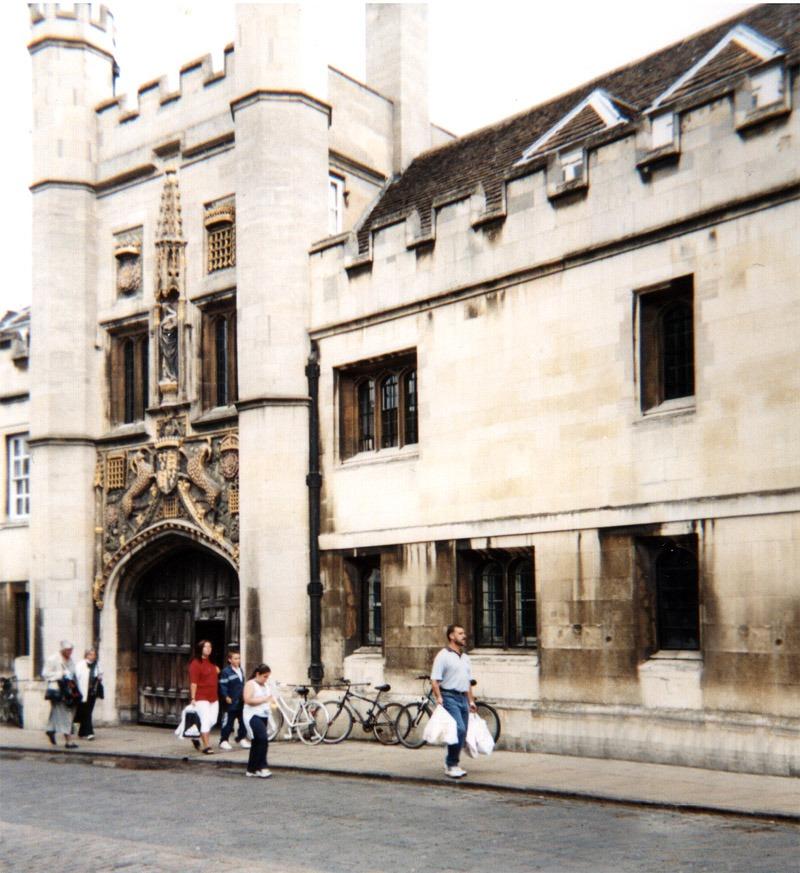
At age 19 Charles enrolled at Christ’s College, Cambridge, intending to become a clergyman in the Anglican Church (fig.). His disappointed father saw this as a necessity because Charles had been unwilling to complete his studies at Edinburgh and enter the traditional family profession as a physician. Darwin arrived at Cambridge in January 1828. To go to either Cambridge or Oxford was to enter the world of the Victorian gentlemen and to hobnob with the elite and ruling classes of England. Both the Darwins and the Wedgwoods were prominent country gentlemen, and Charles found Cambridge rather suited his taste. His father provided him with a very adequate allowance of 200 pounds a year. Charles soon felt at home at Cambridge where he became reacquainted with past friends from both Reverend Case’s school as well as from Dr. Butler’s school in Shrewsbury. Of even more significance, however, he found a cousin there by the name of William Darwin Fox who would become a close, life-long friend. As young men they were much the same in temperament and enjoyed each other’s company. Later in life they would comfort each other in times of severe tragedy, particularly when they had members of their immediate family die. Hensleigh Wedgewood, another cousin from the Wedgwood side of the family and a good friend of his brother Erasmus (Ras) was also at Christ’s College when Charles arrived, and they too would maintain a lifelong friendship.
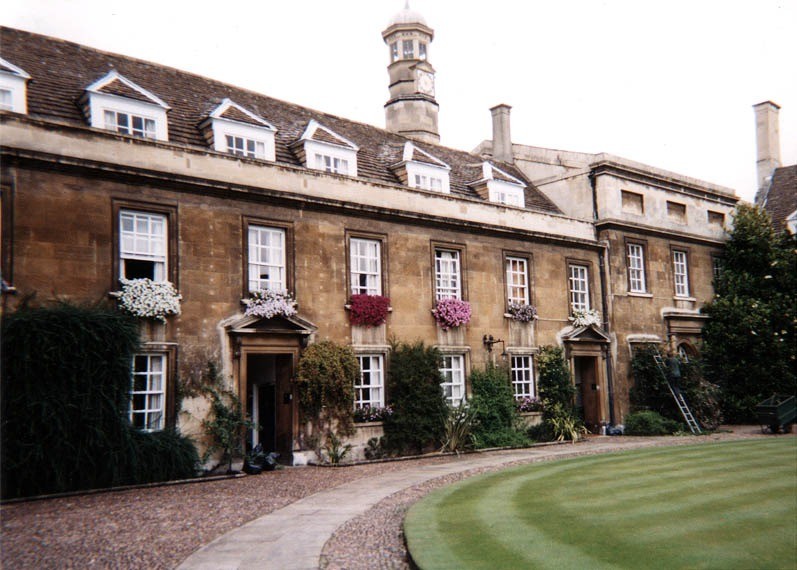
Fox introduced Charles to beetles, and the two of them spent many hours in pursuit of rare specimens -- entomology united them! In Charles’s own words “ no pursuit was followed with nearly so much eagerness or gave me more pleasure as collecting beetles.” At this time he also subscribed to a natural history periodical on entomology published by James Stephens. Darwin established contact with Stephens and sent him a number of beetles and a moth; as a result, his name appeared in the publication. He took pleasure in telling Fox that “you will see my name in Stephen’s last number.” The challenge of catching rare beetles was particularly rewarding and Darwin recalls this interesting experience: “one day on tearing off some old bark, I saw two rare beetles and seized one in each hand; then I saw a third and new kind, which I could not bear to lose, so that I popped the one I held in my right hand into my mouth. Alas it ejected some acrid fluid, which burnt my tongue so that I was forced to spit the beetle out, which was lost as well as the third one.” There is no doubt that he was a natural born entomologist as he quipped “it is quite absurd how interested I am getting to be about the science.”
Unlike the more secular universities of Edinburgh or University College London (known as the Godless College), Oxford and Cambridge were mainly theological training schools for the Anglican Church and had been an integral part of the church since Henry VIII. Darwin accepted the idea of becoming a member of the clergy, and he envisioned himself in a parish church with plenty of time to participate in activities involving his interest in natural history. It is clear that Charles’s enthusiasm for the natural sciences, first exhibited while he was in Edinburgh, became even more central to his interests at Cambridge. He and his close friend Fox read William Paley’s book on Natural Theology which suggested that the way of understanding the natural world was to see it as evidence of God’s creative powers. However, in 1830, Charles read John Hershel’s Preliminary Discourse on the Study of Natural Philosophy that gave an expansive view of the future of scientific understanding, and as a result he developed a burning desire to add his own contribution to the “noble structure of natural sciences.”
Professor John Stevens Henslow, from whom Charles took a course in botany, befriended him, as Henslow recognized Darwin’s promise as a naturalist. He also encouraged Charles to take a course in geology as he thought it would be valuable to his future studies. Charles had already developed an interest in geology, but Professor Adam Sedgwick’s lectures on the subject gave him a greatly expanded appreciation for the time-line that was available for the development of biological systems.
After Charles completed his degree at Cambridge in 1831, he and Adam Sedgwick spent some time working on a geological map and studying rock formations in northern Wales. When they returned to Shrewsbury two letters were waiting for Charles, one was from Professor Henslow and the other from George Peacock who was responsible for nominating naturalists for navy ships making surveys. Henslow had recommended Darwin to Peacock and so Darwin was offered the post of unpaid naturalist to go on a trip around the world on the HMSBeagle. All this was a complete surprise to Charles who did not consider himself qualified as a naturalist but was eager to accept. Robert Darwin thought it was a wild scheme, and although not absolutely forbidding Charles from going said “if you can find any man of common sense who advises you to go, I will give my consent.” Reluctantly Charles wrote to Henslow saying that he could not go.
Charles immediately left to go on a hunting trip with his uncle Josiah Wedgwood who did not agree with Charles’s father and thought that the offer to go on the Beagle was too important to turn down. Josiah returned with Charles to Shrewsbury and convinced Robert, who had always regarded Josiah as a man of common sense, that it would be a great experience for Charles. After a discussion among the three of them Robert gave his consent for Charles to go on the voyage that would eventually change his life. Charles, in a great state of excitement, wrote a letter to Henslow canceling his earlier letter of refusal.
The following morning Charles took a coach to Cambridge to see Henslow where bad news awaited. Darwin was told that an offer for the position on the Beagle had been made to a Mr. Chester. But all was not lost as the captain of the Beagle, Robert Fitzroy, had made it clear that he would only take someone whom he liked personally, as they would be sharing a cabin that was very small. As it turned out, after two meetings Fitzroy chose Charles. On learning that he had been selected Charles wrote a very prescient letter to Fitzroy saying that the day of the Beagle’s departure would be glorious."My second life will begin and it shall be as a birthday for the rest of my life.”
